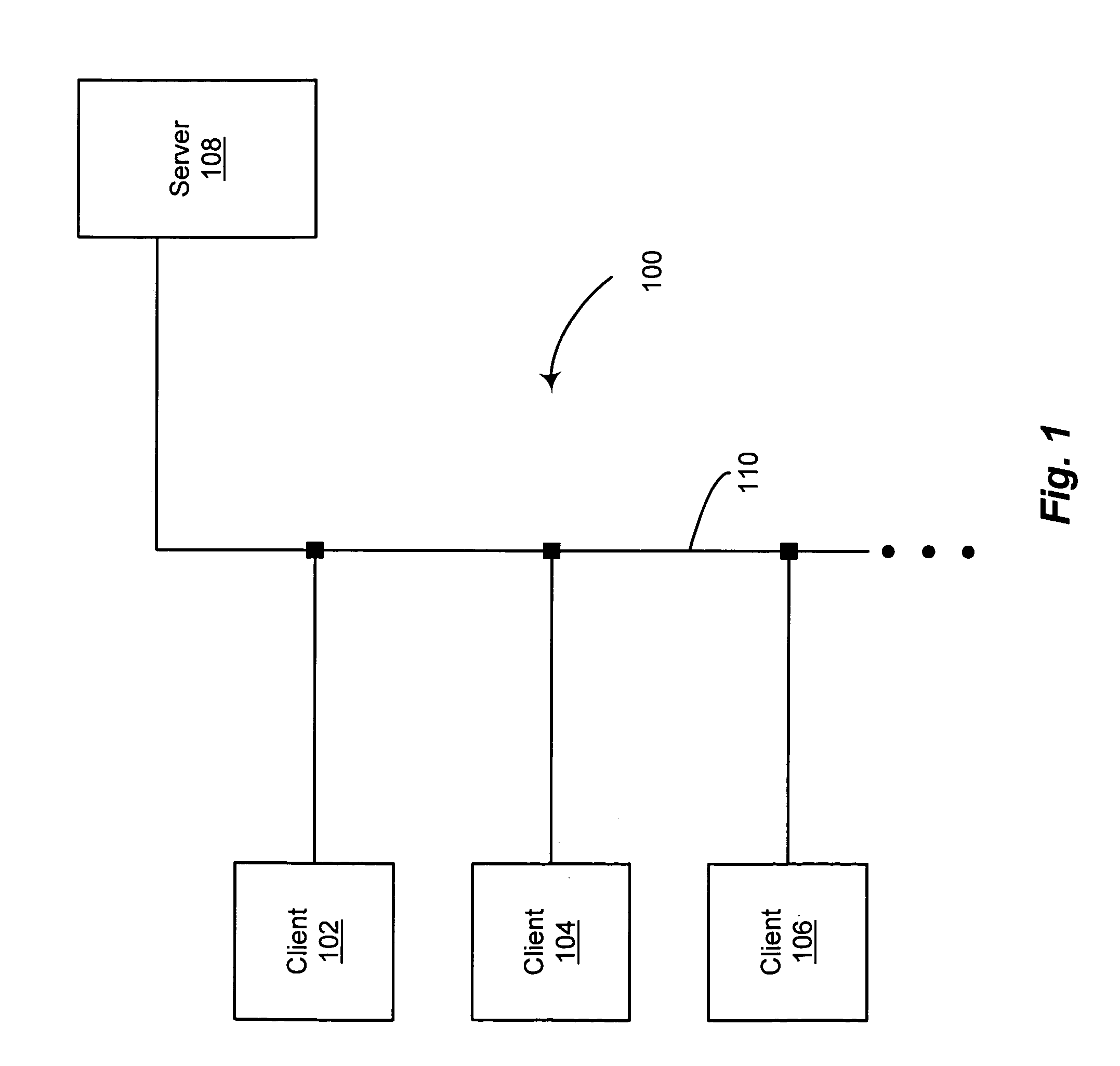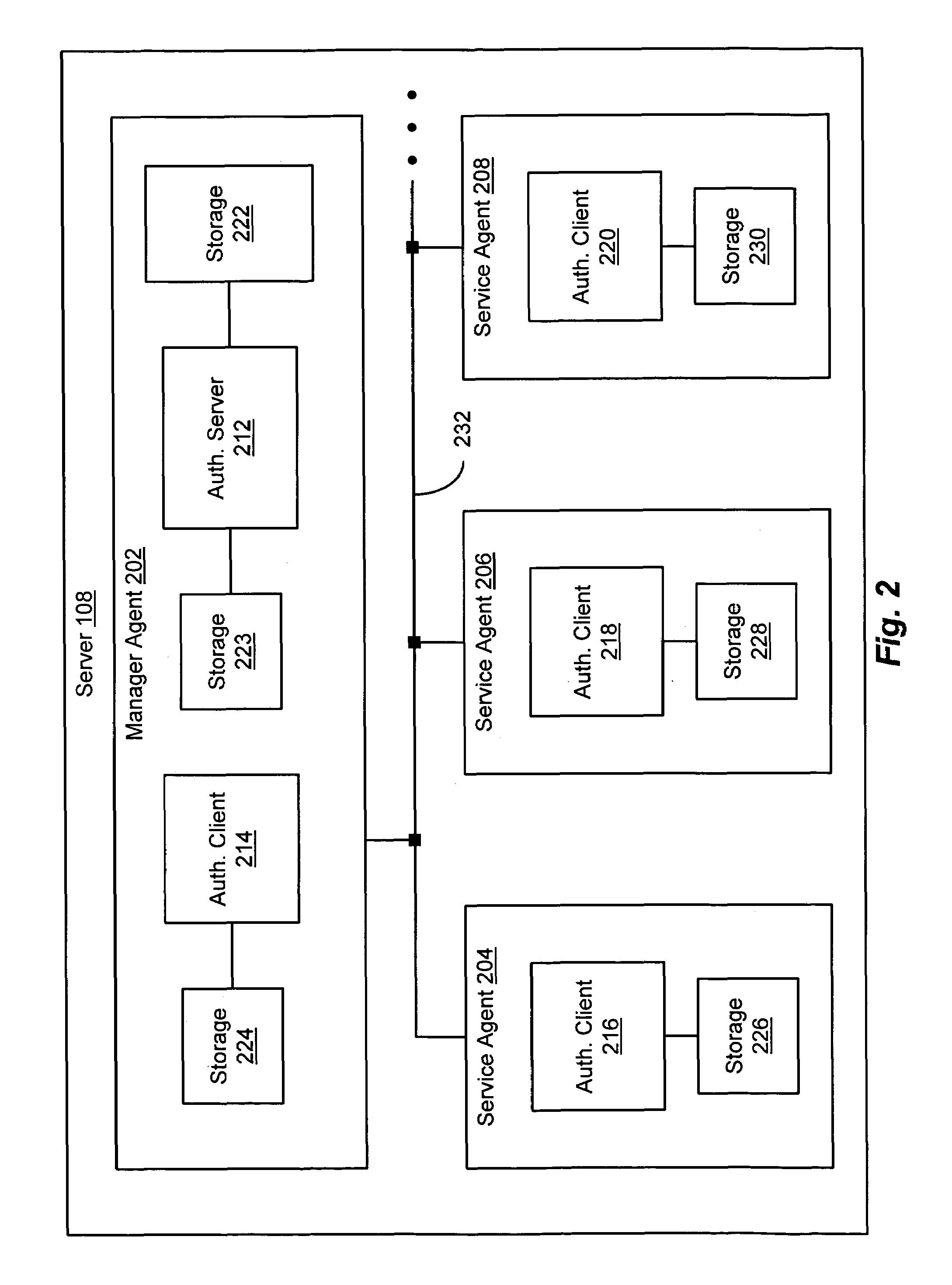Distributed system authentication
a distributed system and authentication technology, applied in the field of distributed system authentication, can solve the problem that users typically do not know the user's right to access requested services/resources
- Summary
- Abstract
- Description
- Claims
- Application Information
AI Technical Summary
Benefits of technology
Problems solved by technology
Method used
Image
Examples
Embodiment Construction
[0019]FIG. 1 depicts an illustrative embodiment of a computer network 100 that is operative in a manner in accordance with the present invention. Specifically, the computer network 100 includes a plurality of client computers (“clients”) such as clients 102, 104, and 106, and at least one server computer (“server”) such as server 108. Further, the clients 102, 104, and 106, and the server 108 are operatively connected to a network 110, which may comprise a Local Area Network (LAN), a Wide Area Network (WAN), the Internet, or any other network suitable for linking clients and servers to allow communications therebetween.
[0020]Each of the clients 102, 104, and 106, and the server 108, includes a network adapter (not shown) for enabling communications over the network 110. In addition, each client 102, 104, and 106 includes at least one memory (not shown) such as a ROM or RAM, and at least one processor (not shown) operative for executing programs stored in the memory, including applic...
PUM
 Login to View More
Login to View More Abstract
Description
Claims
Application Information
 Login to View More
Login to View More - R&D
- Intellectual Property
- Life Sciences
- Materials
- Tech Scout
- Unparalleled Data Quality
- Higher Quality Content
- 60% Fewer Hallucinations
Browse by: Latest US Patents, China's latest patents, Technical Efficacy Thesaurus, Application Domain, Technology Topic, Popular Technical Reports.
© 2025 PatSnap. All rights reserved.Legal|Privacy policy|Modern Slavery Act Transparency Statement|Sitemap|About US| Contact US: help@patsnap.com



